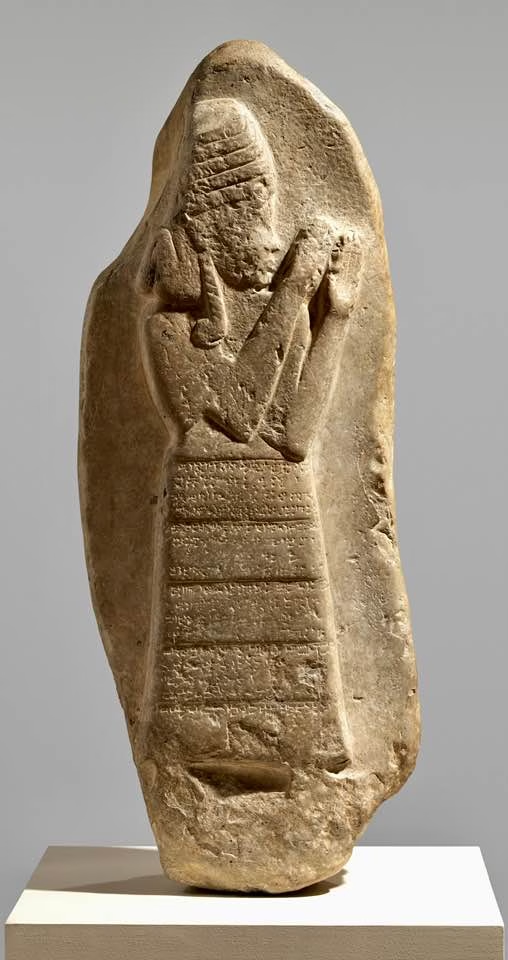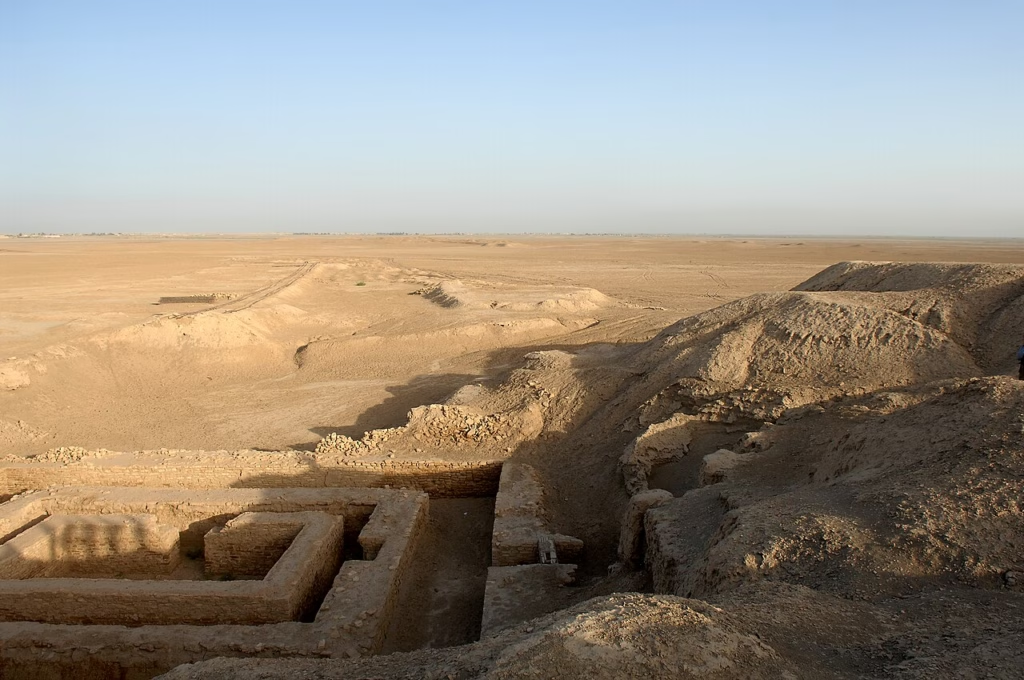A remarkable stele from the Kassite period, dating to circa 1307–1282 BCE, offers deep insight into the religious practices and artistic expression of ancient Mesopotamia. Discovered in Uruk, this sculpted monument features the image of Goddess Lama, known as a protective and interceding deity in Mesopotamian belief systems.
Goddess Lama: A Divine Intercessor Between Humans and Gods
The figure carved into the stele is easily identified by her horned headdress, a symbol of divinity, and her upraised arms in a prayerful posture. Her face turns to the left, a typical stance associated with divine intercessors in Mesopotamian art. Lama served as a spiritual intermediary between mortals and the greater gods.
An intricate detail lies in her attire: a five-tiered skirt adorned with 17 lines of Sumerian cuneiform script. This inscription records a dedicatory prayer from King Nazi-Maruttash, asking the goddess Inanna to protect his life. It also includes a curse formula targeting anyone who might damage or remove the stele from its original context.

A Twin Stele in the Sacred District of Uruk
Scholars believe that this artifact was one of a pair of steles erected in Eanna, the “House of Heaven” — a sacred precinct dedicated to Inanna in Uruk. Its counterpart is now housed in the Iraq Museum in Baghdad and features a mirrored design and similar inscriptions.
The Eanna district underwent significant renovations during the Kassite era and remained a major cult center for over two millennia. The placement of these steles there reinforces their ritual significance.

Archaic Language and Symbolism With Intentional Meaning
The choice of Sumerian, a language no longer spoken at the time but still used for religious purposes, was likely deliberate. It reflects the Kassite rulers’ effort to legitimize their reign through historical and cultural continuity. Similarly, the use of the Goddess Lama motif, rarely seen after the Old Babylonian period, underscores a revival of archaic religious symbolism.
A Silent Witness to an Ancient Worldview
The Stele of Protective Goddess Lama is not only a religious monument but also a key archaeological artifact that enriches our understanding of Kassite royal ideology, sacred space, and inscriptional tradition. Through its language, iconography, and historical context, the stele stands as a silent witness to the spiritual and political values of its time.
Cover Image Credit: The Met





